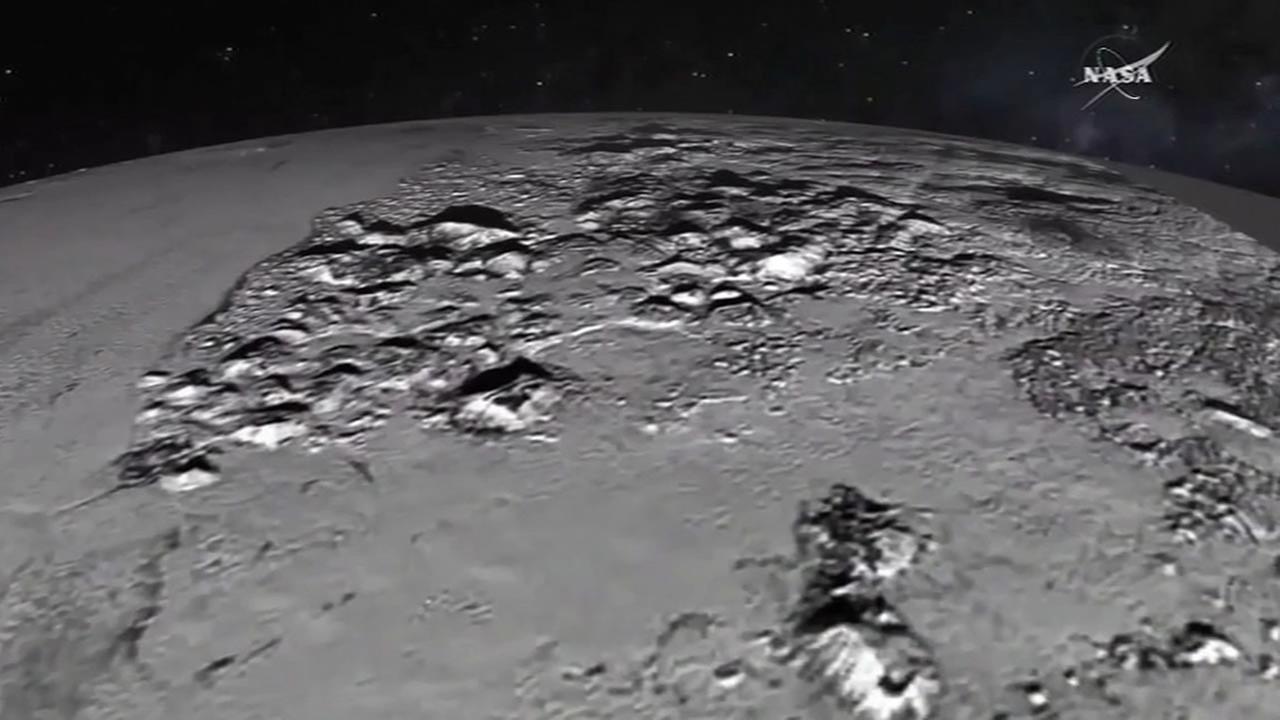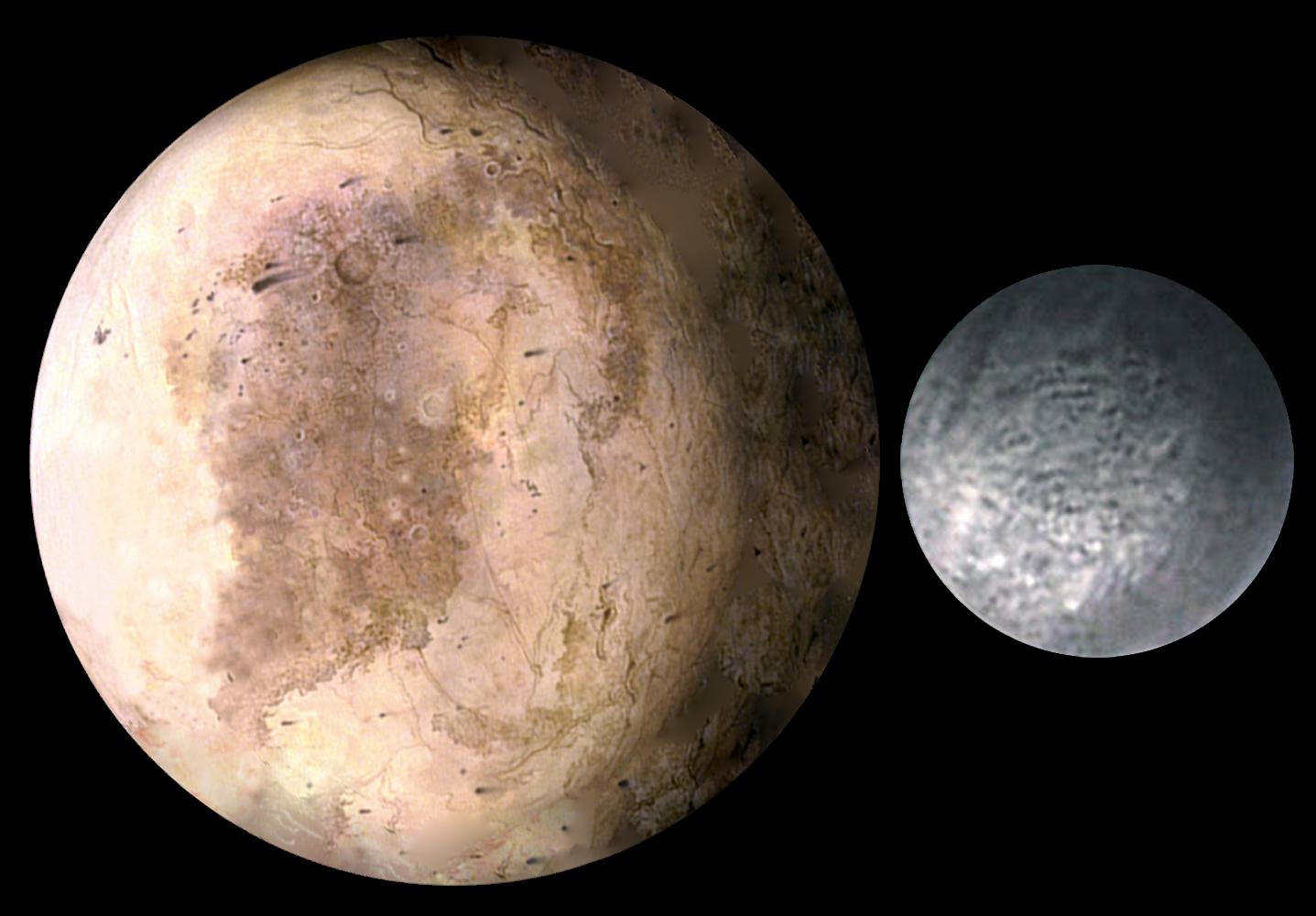

UVS is one of 10 science instruments and 11 investigations for the JUICE spacecraft. The mission’s science goals focus on Jupiter and its system, making multiple flybys of the planet’s large, ocean-bearing satellites with a particular emphasis on investigating Ganymede as a potentially habitable planetary body. The UVS instrument is one of three instrument projects comprising NASA’s contribution to the JUICE mission. SAN ANTONIO - J-The Southwest Research Institute-led Ultraviolet Spectrograph (UVS) aboard ESA’s Jupiter Icy Moons Explorer (JUICE) spacecraft has successfully completed its initial commissioning following the April 14 launch. The cloud-like structure on the right is a nearby galaxy called the Large Magellanic Cloud. This segment of JUICE-UVS data shows a swath of the southern sky, revealing many UV-bright stars in the Milky Way near the southern constellation Carina on the left. The density of impact craters covering Pluto varies from heavily cratered terrains in Cthulu Regio that date from the earliest days of the Solar System, to Sputnik Plantia which does not show any impact craters at all.Image: The SwRI-led Ultraviolet Spectrograph (UVS) aboard ESA’s Jupiter Icy Moons Explorer, JUICE, has successfully completed its initial commissioning following the spacecraft’s April 14 launch. The spacecraft showed that Pluto's topography is very rugged, with some water-ice mountain blocks reaching 5km in height. The spacecraft gathered over 50Gb of data while passing by Pluto, revealing it as a geologically and meteorologically active world. It revealed for the first time the potential complexity of dwarf planet systems in the Kuiper Belt. The New Horizons mission performed a flyby of Pluto in the summer of 2015. Charon is so immense that Pluto and Charon orbit each other like a double planet. Pluto has 5 moons, with the largest being Charon. The surface of Pluto is extremely cold, -378 to -396 degrees Fahrenheit (-228 to -238 degrees Celsius).
#NASA NEWS ABOUT PLUTO FREE#
The atmosphere is almost entirely free of clouds, while scientists from NASA's New Horizons mission have identified some cloud candidates using images taken from the spacecraft's Long Range Reconnaissance Imager. The dwarf planet has a thin atmosphere of nitrogen, methane, and carbon monoxide. A typical day on the dwarf planet lasts about 153 Earth hours, with a year lasting about 248 Earth years. It orbits the Sun at a distance of around 3.6 billion miles (5.8 billion km), 40 times as far as Earth. That is about half the width of the United States, or 2/3 the width of the Earth's moon. Pluto is approximately 1,400 miles (2,380km) wide. Pluto was officially downgraded to a dwarf planet by the International Astronomical Union on August 24, 2006, which is now known as Pluto Demoted Day. As of right now, Pluto remains the largest known world in the Kuiper Belt. In 1992 its classification was called into question when other objects of similar size were discovered in the Kuiper Belt, a ring of bodies that lies beyond Neptune's orbit. An 11-year-old girl by the name of Venetia Burney is credited with naming the planet. When it was first discovered, it was classified as the ninth planet in the solar system.

Pluto Day is observed annually on February 18 to celebrate the discovery of the dwarf planet in 1930.

NASA's New Horizons spacecraft made its historic flight through the Pluto system in 2015, providing the first close-up images of the planet and its moons.The dwarf planet is smaller than Earth's Moon, with red snow-capped mountains as tall as the Rockies.Pluto is an icy dwarf planet that usually lies beyond the orbit of Neptune in the Kuiper Belt.


 0 kommentar(er)
0 kommentar(er)
